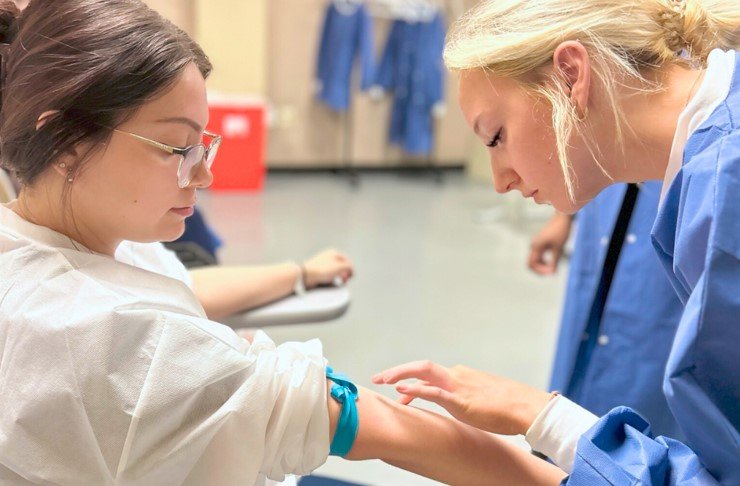Improving Data Sharing in Hospital Supply and Equipment Management: Strategies and Challenges
Summary
- Hospitals in the United States face challenges in sharing data among labs for improved interoperability in supply and equipment management.
- Data sharing issues can lead to inefficiencies, increased costs, and delays in patient care.
- Addressing these challenges requires collaboration, standardization, and investment in interoperable technology solutions.
- Increased Costs: Data silos and lack of interoperability can result in duplicate orders, overstocking, and underutilization of supplies and equipment, leading to increased costs for the hospital.
- Inefficiencies: Inadequate data sharing mechanisms can create bottlenecks in the Supply Chain, causing delays in the delivery of critical items and affecting patient care.
- Patient Safety Concerns: Inaccurate or incomplete data can compromise patient safety by leading to errors in medication administration, mismanagement of medical devices, and other preventable incidents.
- Data Silos: Hospitals often have separate systems and databases for managing Supply Chain, procurement, and inventory data, creating silos that hinder data sharing and collaboration.
- Lack of Standardization: Different hospitals and labs may use different data formats, coding systems, and communication protocols, making it difficult to exchange information seamlessly.
- Privacy and Security Concerns: Hospitals are obligated to protect patient health information and other sensitive data, which can complicate data sharing efforts due to privacy Regulations and cybersecurity risks.
- Resource Constraints: Limited funding, staff expertise, and IT infrastructure can impede hospitals' ability to invest in interoperable technology solutions and data-sharing initiatives.
- Collaboration and Partnerships: Hospitals can work together with labs, suppliers, and other stakeholders to establish data-sharing agreements, develop common standards, and streamline communication processes.
- Standardization and Integration: Adopting standardized data formats, coding systems (such as GS1 standards), and interoperability protocols (such as HL7 and FHIR) can facilitate seamless data exchange between different systems and platforms.
- Investment in Technology: Hospitals should invest in interoperable technology solutions, such as Supply Chain management systems, Electronic Health Records, and data analytics tools, to improve data visibility, accuracy, and accessibility.
- Training and Education: Providing staff with training on data management best practices, data governance policies, and cybersecurity protocols can enhance data-sharing capabilities and promote a culture of data stewardship within the organization.
The Importance of Data Sharing in Hospital Supply and Equipment Management
Hospital supply and equipment management play a crucial role in ensuring that healthcare facilities have the necessary resources to provide quality care to patients. From medical devices and equipment to pharmaceuticals and supplies, hospitals rely on a wide range of products to deliver services effectively. To manage these resources efficiently, hospitals need access to accurate and up-to-date data on inventory levels, usage rates, and procurement needs.
However, many hospitals in the United States face challenges when it comes to sharing data among labs for improved interoperability in supply and equipment management. These challenges can have a significant impact on the efficiency and effectiveness of hospital operations, leading to issues such as:
Challenges Faced by Hospitals in Data Sharing
Several factors contribute to the challenges hospitals face in sharing data among labs for improved interoperability in supply and equipment management. Some of the key challenges include:
Strategies for Improving Data Sharing and Interoperability
Addressing the challenges of data sharing among labs for improved interoperability in supply and equipment management requires a multi-faceted approach that involves collaboration, standardization, and investment in interoperable technology solutions. Some strategies that hospitals can consider implementing include:
Conclusion
Improving data sharing among labs for improved interoperability in supply and equipment management is essential for hospitals to optimize resource utilization, reduce costs, and enhance patient care outcomes. By addressing the challenges of data silos, standardization, privacy concerns, and resource constraints through collaboration, standardization, and investment in technology, hospitals can overcome barriers to data sharing and achieve greater efficiencies in Supply Chain operations. Ultimately, interoperable data systems enable hospitals to make informed decisions, automate processes, and deliver high-quality care to patients in a timely and cost-effective manner.

Disclaimer: The content provided on this blog is for informational purposes only, reflecting the personal opinions and insights of the author(s) on the topics. The information provided should not be used for diagnosing or treating a health problem or disease, and those seeking personal medical advice should consult with a licensed physician. Always seek the advice of your doctor or other qualified health provider regarding a medical condition. Never disregard professional medical advice or delay in seeking it because of something you have read on this website. If you think you may have a medical emergency, call 911 or go to the nearest emergency room immediately. No physician-patient relationship is created by this web site or its use. No contributors to this web site make any representations, express or implied, with respect to the information provided herein or to its use. While we strive to share accurate and up-to-date information, we cannot guarantee the completeness, reliability, or accuracy of the content. The blog may also include links to external websites and resources for the convenience of our readers. Please note that linking to other sites does not imply endorsement of their content, practices, or services by us. Readers should use their discretion and judgment while exploring any external links and resources mentioned on this blog.

